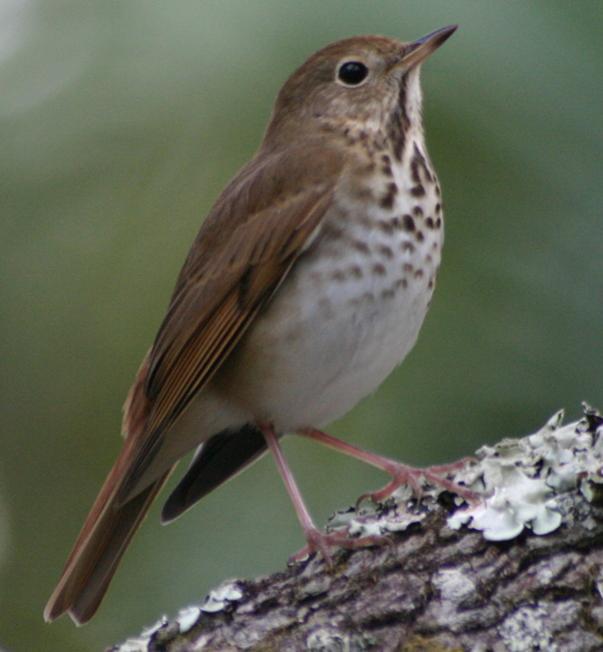This news release is available in German.
Many musical cultures around the world use pitch systems in which notes are related by simple integer proportions (ratios between note frequencies) corresponding to the harmonic (overtone) series. The diatonic major scale, prevalent in Western music, is a typical example. For a long time, scientists have debated the relative contribution of biology and culture in shaping these pitch systems. One way to answer this question is to study animal "song": if the vocal displays of some animals, such as birds or whales, follow some of the same principles that characterize human musical systems, this might suggest a biological basis for these musical systems.
The hermit thrush is a common, medium-sized, North American songbird whose song has attracted the attention of ornithologists and musicologists for more than a century. Early 20th-century studies claimed that hermit thrush song follows the same principles found in human musical systems, but these were anecdotal reports which were not supported by a rigorous analysis. However, a new study conducted by a team of researchers from the University of Vienna, Austria, the Cornish College of the Arts, USA, and the Philipps University of Marburg, Germany, shows that hermit thrush song indeed uses notes that are generally related by simple integer proportions, like much human music. Moreover, the notes used in each song are mostly drawn from the same overtone series, meaning that they are multiples of the same underlying frequency.

This is a hermit thrush.
(Photo Credit: Daniel Berganza/Wikimedia)
To arrive at this conclusion, Emily Doolittle (Cornish College of the Arts) and Tecumseh Fitch (University of Vienna) analyzed high-quality recordings of the songs of 14 male hermit thrushes. Bruno Gingras (University of Vienna) and Dominik Endres (Philipps University of Marburg) then used two different statistical methods to demonstrate that the notes of the hermit thrush song were, in most cases, simple integer multiples of a base frequency, corresponding to an overtone series. The authors controlled for other possible explanations, such as the possibility that hermit thrushes could select notes using the resonances of their vocal tract in a manner similar to wind instruments like the alphorn. Their results thus strongly suggest that hermit thrushes actively select the pitches they sing.
Although further research is needed to explain why hermit thrushes choose to sing pitches whose relationship follows the harmonic series, one possibility, mentioned by the authors, is that female hermit thrushes may evaluate a male's singing accuracy by its ability to follow the overtone series. Another possibility is that, like humans, hermit thrushes find it easier to remember or process pitches that follow the overtone series.
Taking into account other recent studies, such as the finding that newly hatched domestic chicks show a preference for consonant intervals, this report lends support to the idea that some features of human musical systems may be based, at least in part, on biological principles that are shared with other animals such as songbirds. The current results are thus especially relevant in the context of the longstanding debate regarding the origins of human musical preferences.
Source: University of Vienna